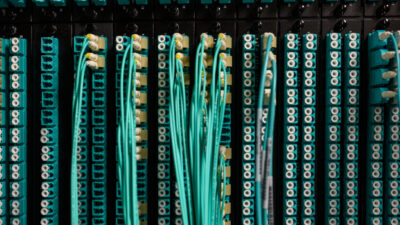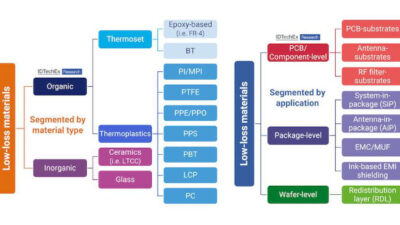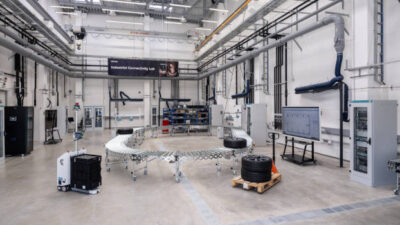Technology update: Cellular communications can help industrial automation, infrastructure, and systems management applications. As buildings and infrastructure applications add automation, they may use industrial wireless machine-to-machine (M2M) communications for remote, cost-effective monitoring and control of telemetry systems, sensors, cameras, industrial equipment, and other systems.

As modern buildings and infrastructure become more automated, organizations can choose wireless machine-to-machine (M2M) communications. M2M technology allows private and public organizations to monitor and control telemetry systems, sensors, cameras, industrial equipment, and virtually any other system remotely and cost-effectively. As a result, organizations can more efficiently manage manufacturing facilities, commercial buildings, transportation infrastructure, farms and vineyards, and dozens of other remote and hard-to-reach systems.
For a broad range of companies, the ability to collect data and control systems in real time can unlock significant benefits, increasing efficiency and productivity, lowering costs, and improving safety and security.
M2M cellular communications
Cellular M2M connectivity helps achieve benefits in:
- Industrial and manufacturing: Industrial and manufacturing companies face constant pressure to lower costs and improve speed and efficiency. As these companies seek to boost productivity, they are using increasingly sophisticated manufacturing and supply chain automation applications. To reap the benefits of automation, however, they need to be able to gather more real-time data from the plant floor. Cellular technologies allow these companies to monitor and control equipment virtually anywhere, even in hard-to reach and temporary locations. They enable companies to operate supervisory control and data acquisition (SCADA) systems from anywhere in the facility or even remotely, and help drive down costs by integrating industrial equipment with security and environmental controls.
- Commercial property: Companies operating commercial and large residential properties can realize substantial cost savings by monitoring and automating building environmental systems. Cellular M2M solutions provide a means to integrate all environmental controls into one remotely controllable system, and to integrate with video surveillance and security systems. Ultimately, companies can monitor, control, and secure multiple properties from anywhere, even as they improve power efficiency and reduce operating expenses.
- Public infrastructure: Organizations managing highways, traffic light systems, and other public infrastructure are seeking to relieve traffic congestion and improve safety. New traffic monitoring and decision support systems can help them accomplish this, but they are only as good as the available data. Public organizations are increasingly turning to cellular M2M solutions to collect real-time traffic and infrastructure data, especially from remote locations that would be too difficult or expensive to connect with wired communications.
- Agriculture: Farms, vineyards, and other agricultural businesses need real-time information about crops and climate, and the ability to monitor conditions at hundreds or even thousands of points across a vast geographic area. Connecting sensors and portable equipment via land lines across vast farms and vineyards is simply not possible. Cellular technology empowers agricultural companies to maintain more in-depth, real-time information about the health of their crops, and to reduce labor costs and risk.
- Systems management: Many organizations are using cellular M2M solutions to connect other types of remote systems, such as monitoring construction sites and structures for vibrations, automated irrigation systems in parks and farms, systems to track mining and farming equipment, portable systems used for testing and measurement, and others.
Real-time connectivity
For these diverse applications and businesses, cellular M2M connectivity can address many business and technical challenges, and enable important benefits. With M2M connectivity, organizations can gain real-time information about infrastructure, equipment, or any other system from virtually anywhere and remotely monitor, update, and control equipment used for environmental controls, manufacturing equipment for irrigation systems, and others.
Connectivity may be extended to locations that would be too difficult or expensive to connect otherwise, while enabling transmission of data securely and reliably from remote systems. Additionally, M2M systems can be designed to withstand harsh environmental conditions and easily manage and control connected devices across the country or around the world. M2M systems provide flexibility to move equipment as needed, or bring up and tear down systems quickly for temporary or seasonal deployments.
Optimization, safety, reliability
Despite this diversity, the advantages of cellular communications are often the same: more visibility, more control, and more tools to optimize organizational efficiency, safety, and profitability. In addition, the barriers that used to prevent organizations from taking advantage of remote monitoring and automation—primarily, the need to custom design the solution from scratch—no longer apply. By using modern M2M management and application platforms, and taking care to choose platforms designed to meet real-world requirements, organizations can take full advantage of the M2M revolution.
– Brian Anderson is vice president of marketing, solutions and services for Sierra Wireless. Edited by Mark T. Hoske, content manager CFE Media, Control Engineering, Plant Engineering, and Consulting-Specifying Engineer, [email protected].
ONLINE
Control Engineering asks Sierra Wireless about industrial networks.
Learn more from Sierra Wireless about AirVantage.



